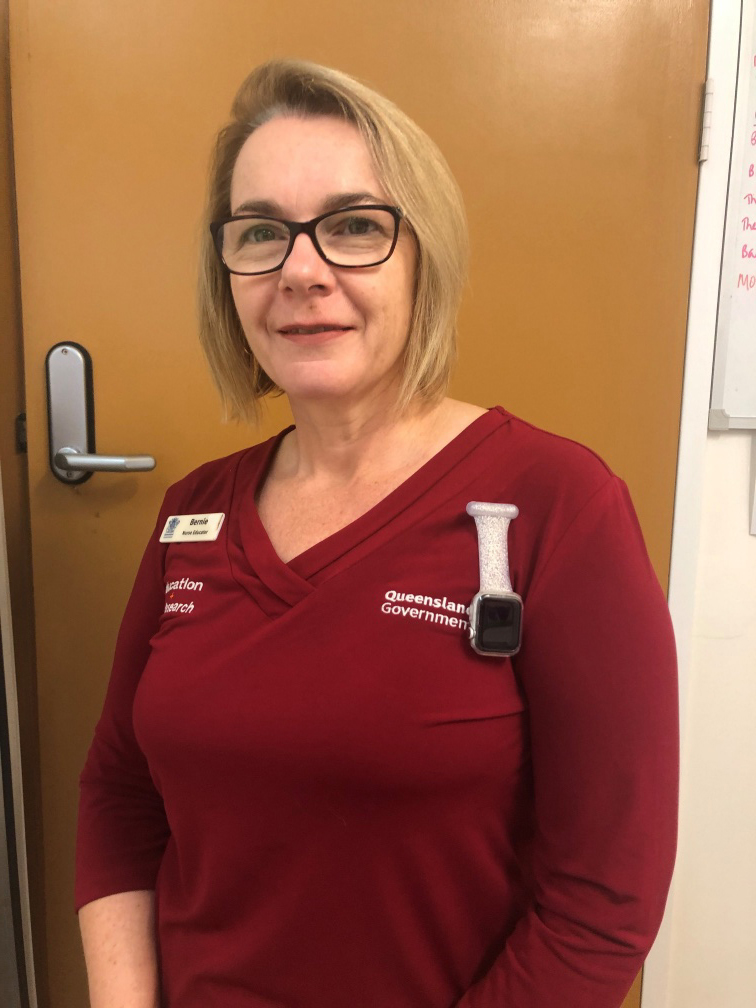As part of our acknowledgement of World Sepsis Day, we’ve dedicated the entire month of September to sepsis.
Since the development of the adult and paediatric sepsis clinical pathways, we’ve received wide-ranging feedback from clinicians about how their perceptions of sepsis and the way it is currently managed have changed.
This week, we’re bringing you some of these stories. Today we hear from Bernadette Vasiliadis, Nurse Educator (Maternity and Clinical), Banana hub, Central Queensland Hospital and Health Service.

‘The staff were ready; they were receptive and were well-informed about sepsis and had been waiting for the Rural pathways to arrive. We simply focused on the different segments of the pathway and we walked through how it worked – I didn’t need to “sell” them the importance of recognising sepsis – they knew.’
‘The biggest thing for staff is that usually when you talk about a clinical pathway, that is a document thought of once they are in the acute care area of the ED or when they are admitted. I explained it to our teams that it’s a “tool”, so when patients present to triage and they meet some of the screening criteria, you grab the “pathway” along with your specific Q-ADDDs observation (Early Warning Tool) sheet and you start that straight away.’
‘If they walked in with an arm injury you grab an upper limb neurovascular observation form. Think of it like that. It’s not a decision, it’s a screening tool and observation form. Use it early – not later on.’
Bernadette says while sepsis wasn’t a ‘garden variety’ presentation in the region, the screening tool helped ensure ‘insidious [not obvious] cases’ were identified. ‘There’s been lots of times where we have de-escalated care because it wasn’t sepsis, but the staff are happy to know they have met that sepsis exclusion criteria for best patient care and can continue to care for that patient.’
‘For patients that are septic, the treatment bundle is there, and the staff are able to use the guide for drawing up antibiotics quickly. It’s important anywhere, but in small teams it’s essential to have that. The antibiotics are targeted, it’s time efficient and there is no doubt. The Clinical Escalation guideline is clear and Retrieval Services Queensland is contacted promptly.’
Biloela has also set up a process whereby our Indigenous Health Liaison Officer is notified of patients identifying as Aboriginal or Torres Strait Islander who have been sent home after being de-escalated from the pathway. ‘The health worker will then conduct a follow up to see how the patient is going because of their increased susceptibility to sepsis.’
Bernadette says the inclusion of a parent information sheet in the paediatric pathway, which is typically provided to parents when a child has been de-escalated from the pathway, has been working well. ‘It’s helpful for them to have that and be reassured that their child has been assessed, while also being very clear in saying that things could change, and what sepsis looks like.’ An adult version of the information sheet is also available.
‘It empowers them to come straight back in if things deteriorate.’
For more information on the Queensland Sepsis Program, email sepsis@health.qld.gov.au or paediatricsepsis@health.qld.gov.au.